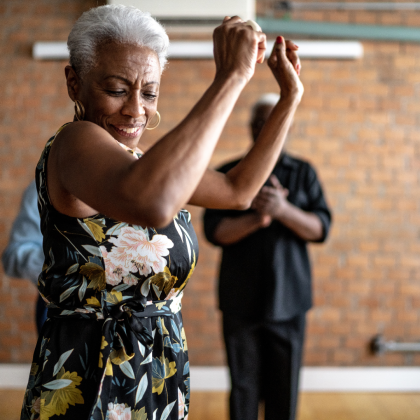Dance and Movement Therapists
Before you said your first word, you moved.
Before you learned to explain your feelings, your body felt them.
Dance/movement therapy (DMT) reconnects you to that original language — movement. Not performance, not choreography, but intuitive, embodied expression that helps you feel, release, and reclaim parts of yourself that might have been locked away in stillness, tension, or silence.
At The Healing Directory, our dance/movement therapists are licensed professionals who use the body as both the doorway and the guide. Through grounding, movement, rhythm, and rest, they help you come home to the body — at your pace.
Who Is Dance/Movement Therapy For?
DMT is especially helpful if you:
- Struggle to stay present in your body
- Feel frozen, tense, or disconnected from physical sensation
- Experience anxiety, trauma responses, or chronic emotional overwhelm
- Find talk therapy helpful but not quite enough
- Want to process emotions through movement, not just words
- Are neurodivergent, highly sensitive, or creatively inclined
- Long to feel expressive, playful, or powerful in your body again

What Happens in a Dance/Movement Therapy Session?
Each session is unique. Some are still, some are expressive. Some focus on subtle shifts in breath or posture; others invite flow, gesture, or guided improvisation. You might:
→ Explore movement that mirrors an emotion or sensation
→ Ground through rhythmic patterns or weight shifts
→ Use the space to process anger, grief, joy, or fear
→ Observe how your body protects, performs, or hides
→ Work with trauma responses like freeze, collapse, or hypervigilance
→ Connect movement with memory, identity, or parts of self
→ Use breath, rhythm, or imagery to anchor you
Your therapist may also reflect patterns or offer movement prompts, helping you expand your range and reconnect with forgotten parts of your body.
What If I’m Not Comfortable Moving?
That’s okay. Many people begin DMT because they feel uncomfortable in their body — not in spite of it. Sessions honor your pacing, boundaries, and nervous system. Movement can be as small as shifting weight in your seat or noticing how your breath moves through your ribs.
Why Choose Dance/Movement Therapy?
Ask yourself:
✓ Do I carry emotions I can’t put into words?
✓ Do I feel disconnected from my body, or overly “in my head”?
✓ Have I tried therapy but still feel physically stuck?
✓ Do I long to reclaim joy, freedom, or expression in my body?
✓ Have I experienced trauma, and want a way to move through it?
If any of these resonate, dance/movement therapy may offer the bridge you’ve been seeking — from insight to embodiment, and from tension to release.
The Science Behind Dance/Movement Therapy
Dance/movement therapy is not only intuitive — it’s supported by research in neuroscience, somatics, and trauma recovery. When you move with awareness and intention, you’re not just exercising your body — you’re re-patterning your nervous system.
Studies show that movement:
➾ Enhances mood by increasing dopamine and serotonin
➾ Helps regulate the autonomic nervous system (especially in trauma)
➾ Improves mind-body integration and emotional awareness
➾ Supports neuroplasticity and embodied memory processing
➾ Builds resilience through body-based self-expression and grounding
The body holds our stories — even the ones we can’t name. Through movement, we begin to rewrite those stories with presence, compassion, and flow.
Dance/movement therapy isn’t about performance — it’s about coming back into relationship with your body, one breath and gesture at a time.
Find an Dance/Movement Therapist Through The Healing Directory
Whether you’re exploring movement for the first time or returning to your body after years of disconnect, a dance/movement therapist can support you in discovering not just how you move — but who you become as you learn to listen, feel, and flow again.